by Lexi Petronis and Maria Carter | Avoid dehydration and other deficiencies with these nutrient-packed picks (Getty Images)
You know summer's the perfect time to switch to flip-flops, but did you know it's also the right time to change your diet? Being outdoors more often—and sweating—ups your risk for health problems such as dehydration, skin sensitivities, and vitamin and mineral deficiencies. The simple (and delicious) solution? "Eat local, in-season fruits. Their nutrients are at their peak in the summer," says Julie Kaye, MPH, RD, CDN, a registered dietitian in New York City. "But they're not the only foods that will help your body look and feel its best during the hottest time of year." Click through to see what else you should definitely eat (and drink!) this season.
You know summer's the perfect time to switch to flip-flops, but did you know it's also the right time to change your diet? Being outdoors more often—and sweating—ups your risk for health problems such as dehydration, skin sensitivities, and vitamin and mineral deficiencies. The simple (and delicious) solution? "Eat local, in-season fruits. Their nutrients are at their peak in the summer," says Julie Kaye, MPH, RD, CDN, a registered dietitian in New York City. "But they're not the only foods that will help your body look and feel its best during the hottest time of year." Click through to see what else you should definitely eat (and drink!) this season.
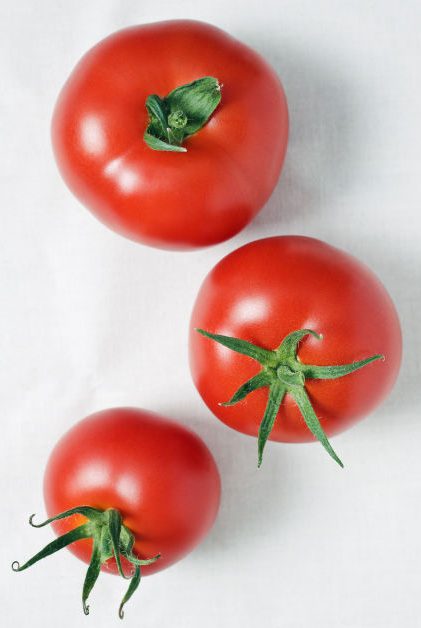
1. Tomatoes
While tomatoes are filled with antioxidants and Vitamin C, they also contain beneficial phytochemicals such as lycopene, which contribute to chronic diseases—especially cancer.
|
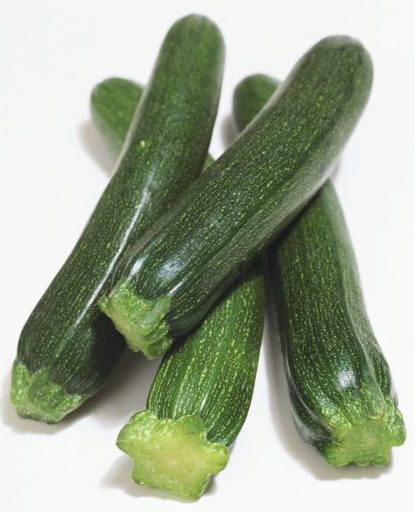
2. Zucchini
Part of the summer squash family, zucchini contains a fiber called pectin, which is linked to increasing heart health and lowering cholesterol.
|

3. Watermelon
As its name implies, this fruit is a hydration hero, and fluids are exactly what you need when the heat is on. "Watermelon's high water content keeps you cool and hydrated," says Boston-based registered dietitian Janel Funk, MS, RD, LDN, who runs the website Eat Well With Janel. That same high water content will also keep you feeling full, which could curb cravings. As an added summer bonus, "Watermelon also contains lycopene, which protects skin cells from sun damage," says Funk.
|

4. Oranges
The sweet citrus fruit is rich in potassium, a nutrient that's crucial in the summer. "You lose potassium through sweat, which puts you at risk for muscle cramps," says Erin Palinski, RD, CDE, LDN, CPT, author of the forthcoming Belly Fat Diet for Dummies. "Eating oranges replenishes your supply and keeps muscle cramps away," she explains. Oranges are also about 80% water, so popping a few juicy slices will keep you hydrated during your sweatiest summer days.
|

5. Yogurt
Protein-packed, portion-controlled and easy to tote in your beach bag (just freeze a cup before you go, so it stays cool until you're ready to snack), yogurt is made for summer eating, says Keri Glassman, MS, RD, CDN, president of Nutritious Life. "The protein satisfies your growling tummy, which will keep you from overloading on salty, high-calorie snacks at your barbeque," explains Glassman. Her recommendation: brands that are low in fat and high in protein, like Dannon Oikos Non-Fat Greek yogurt. It has twice the protein of regular low-fat yogurt. Yogurt also adds a dose of probiotics, beneficial bacteria that keeps your digestive system running smoothly.
|
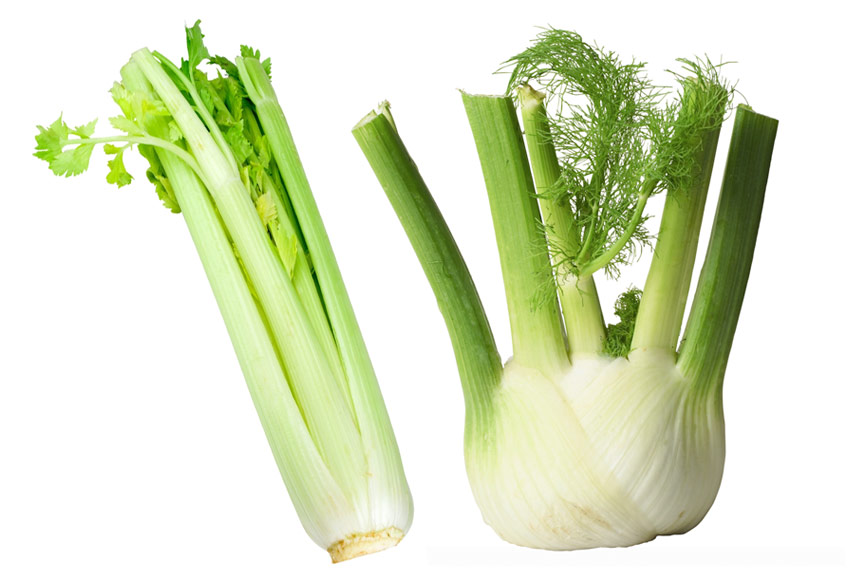 6. Celery and Fennel 6. Celery and Fennel
"Nothing is worse than feeling 'puffy' when you're heading to the beach," says Glassman. "Celery and fennel act as diuretics, helping you lose excess water weight without causing dehydration." How? The ingredients in these two veggies stimulate your kidneys, causing them to flush waste and extra fluid from your body, which beats bloat in your tummy.
|
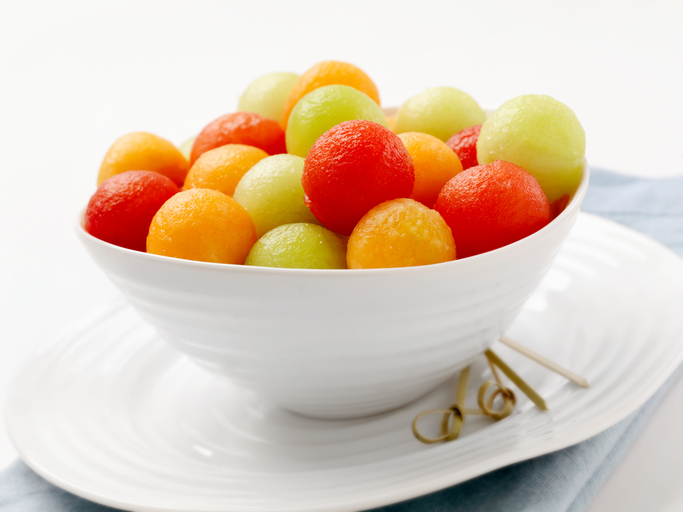 7. Cantaloupe and Honey Dew 7. Cantaloupe and Honey DewCantaloupe, honey dew, and watermelon are also diuretics, which are especially important for women "because we're so affected by hormonal changes," says Sherry Ross, M.D., women's health expert at Providence Saint John's Health Center in Santa Monica, CA. |
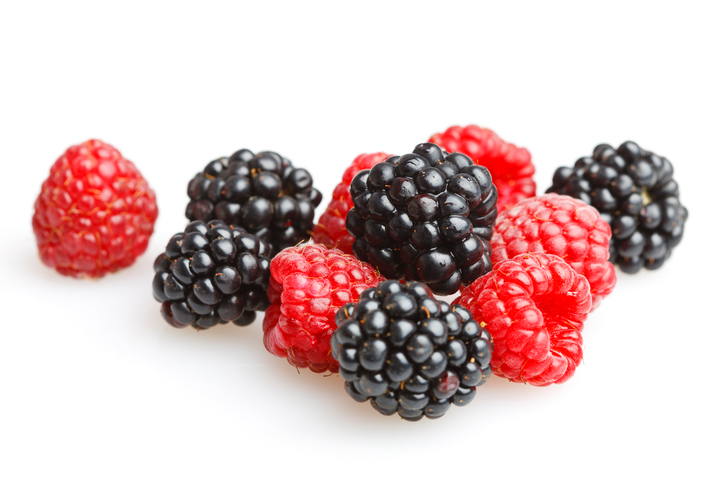 8. Blackberries and Raspberries 8. Blackberries and RaspberriesThese berries are great sources of fiber. "Raspberries are a food that goes unnoticed a lot—they can be very expensive off-season—but there are a lot of awesome qualities in the powerful little raspberry," says Ross. "They're very high in vitamin C and have 8 grams of fiber per cup." |
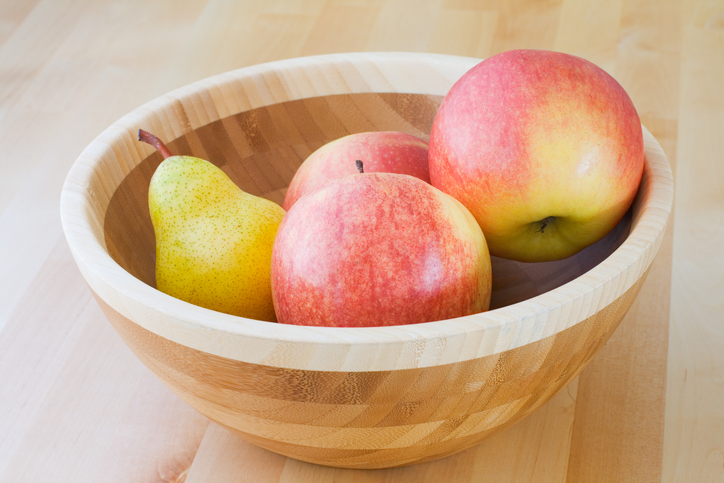 9. Apples, Figs, and Pears 9. Apples, Figs, and PearsThese foods are high in fiber too, says Ross. Keep the skin on apples and pears for the maximum nutritional impact. Be sure to wash thoroughly before eating or, even better, opt for organic—apples are part of the Dirty Dozen, meaning pesticide residue could linger on the skin. Two medium-sized dried figs contain more than 1.5 grams of fiber. |
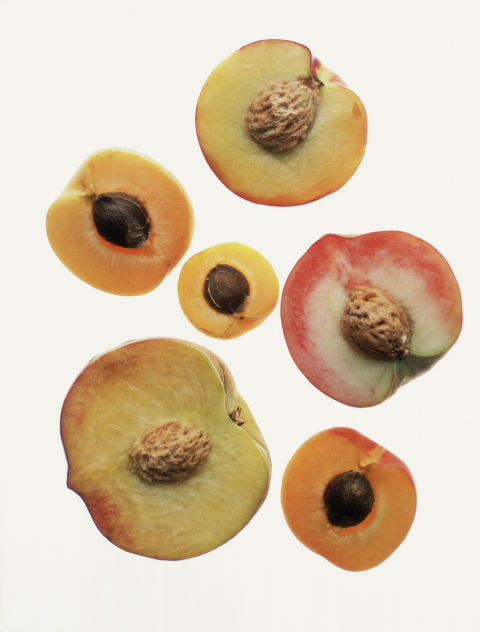 10. Apricots, Peaches, and Nectarines 10. Apricots, Peaches, and NectarinesFresh or dried, nectarines are a solid source of dietary fiber. Both nectarines and apricots are rich in vitamin A and the antioxidant betacarotene, while peaches contain plenty of vitamin C. |
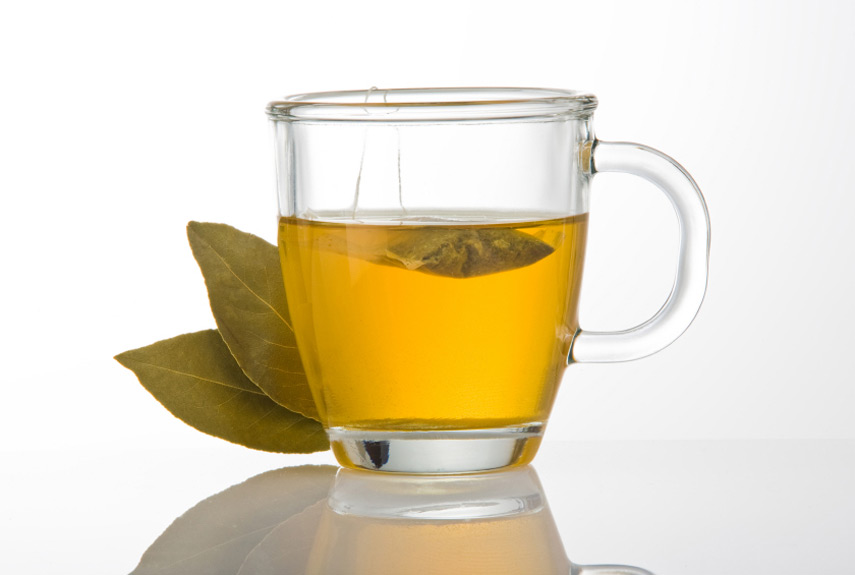 11. Green Tea 11. Green TeaIf you're looking for drinks more exciting than water to keep you hydrated, you may want to go green. "Green tea is the perfect way to supplement your water intake when it's super-hot outside," says Palinski. Studies have suggested that green tea may be helpful in fighting cancer and heart disease, lowering cholesterol, revving your metabolism and even keeping dementia at bay. And if sipping a hot drink in a hot month isn't your cup of…well, tea, try it on ice—the cooler temp doesn't compromise its nutritional benefits. |
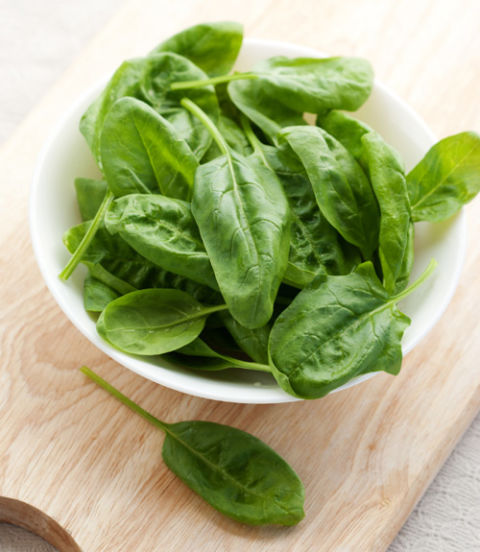 12. Salads with Dark, Leafy Greens 12. Salads with Dark, Leafy GreensLeave steamed veggies behind and fill up on fresh, raw spinach and kale come summer to save your skin. "Carotenoids in orange and dark-green foods, which your body converts to vitamin A, protect skin from sun damage," says Glassman. "They decrease sensitivity to UV light and mend flaky and dry skin, strengthening the skin's defenses against damaging rays." Spruce up your salad with other high-carotenoid sources, like carrots, apricots, cantaloupe, watermelon, tomatoes, pink grapefruit, salmon, milk, egg yolks and cayenne pepper, to make an even healthier meal. |
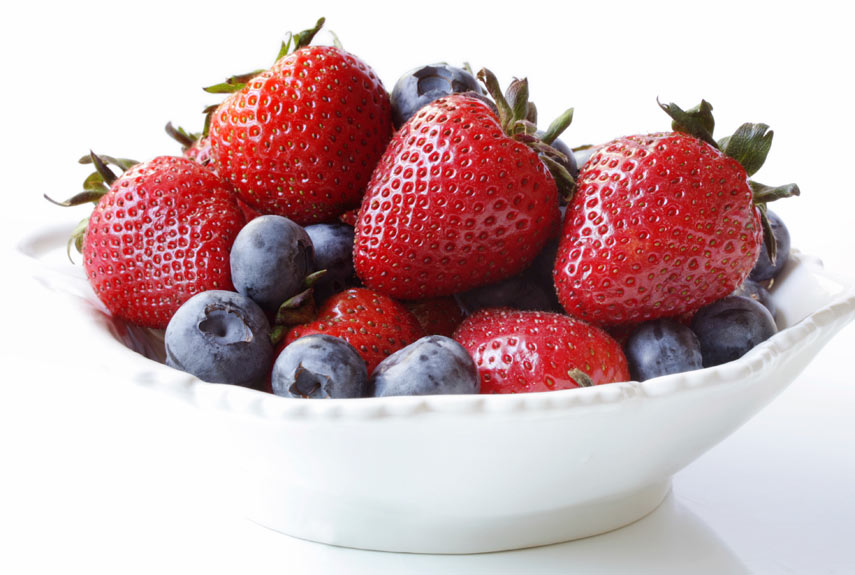 13. Strawberries and Blueberries 13. Strawberries and BlueberriesSweet, juicy berries are filled with flavonoids, powerful disease fighters found in many fruits and vegetables. Among their other pros, "they increase blood flow to skin and decrease sensitivity to light, which improves skin's appearance, structure and texture," says Glassman. With more daylight hours and time spent in the sun, that's key. And because berries are so high in flavonoids, one recent study showed they might help slow cognitive decline. Other great sources of skin-boosting flavonoids: bananas, citrus fruits, broccoli, artichokes, walnuts, pistachios, cashew, dill and thyme. |
 14. Nuts 14. NutsRoss recommends snacking on handfuls of almonds, cashews, and peanuts to get your fill of monounsaturated and polyunsaturated fats, which are thought to lower bad cholesterol levels. |
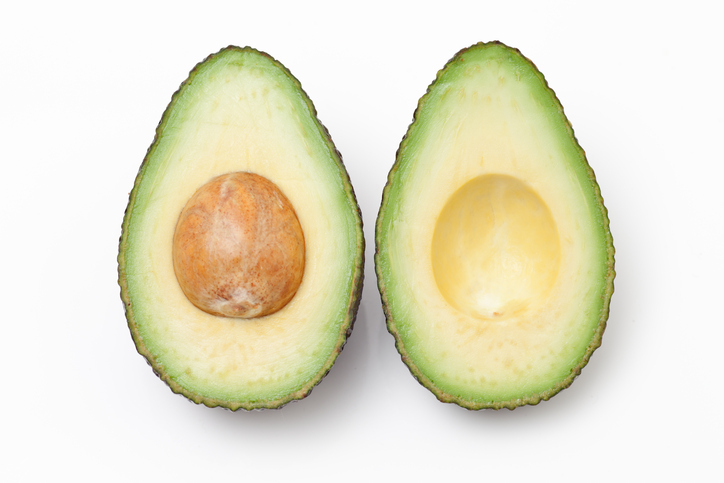 15. Avocados 15. AvocadosAlthough it could be lumped in with nuts as a healthy source of monounsaturated fat, Ross says it's such a superfood it deserves a placeholder of its own. "If I were on a desert island, I would want to be there with an avocado tree because they're so good for the heart and overall wellness," says Ross. |
 16. Salmon 16. Salmon"When I consider the healthiest foods for women, I always think of the Mediterranean diet because it makes the most sense in reducing heart disease, the most common cause of death in women," says Ross. She recommends plenty of protein from fish like salmon, which is also high in Omega 3. (Pictured: barbecue teriyaki salmon with avocados, tomatoes, and brown rice.) |



